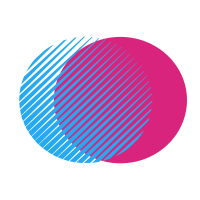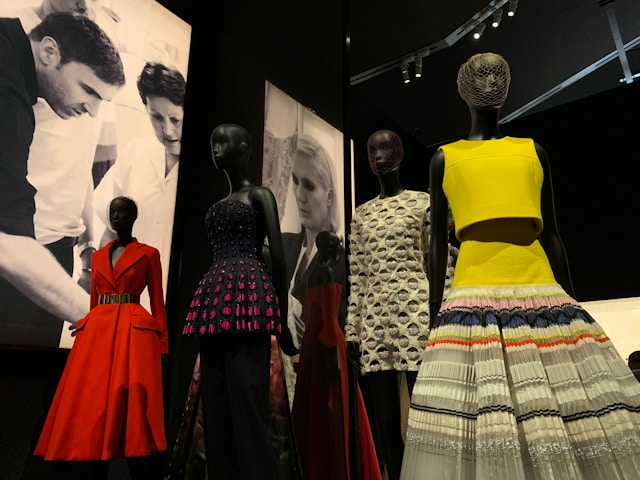Best Software for Fashion Designers: Top Tools on the Market
Introduction
In the fast-paced world of fashion, staying ahead of the curve requires not only creativity but also the right tools. The advent of advanced software has revolutionized the fashion industry, enabling designers to streamline their processes, enhance their creativity, and bring their visions to life more efficiently. This article explores the best software available for fashion designers, detailing their features, benefits, and how they can help designers at every stage of their workflow.
The Importance of Software in Fashion Design
Enhancing Creativity and Innovation
Fashion design software allows designers to experiment with various styles, fabrics, and colors without the need for physical samples. This flexibility fosters creativity and innovation, enabling designers to push the boundaries of their craft.
Streamlining the Design Process
From sketching to pattern making and 3D visualization, fashion design software streamlines the entire design process. This reduces the time and effort required to develop new collections, allowing designers to focus more on creativity and less on repetitive tasks.
Improving Accuracy and Precision
Software tools offer precise measurements and detailed templates, ensuring that designs are accurate and fit well. This reduces the likelihood of errors and the need for costly revisions.
Top Fashion Design Software on the Market
Adobe Illustrator
Overview
Adobe Illustrator is a powerful vector graphics editor widely used in the fashion industry. It is ideal for creating detailed sketches, technical drawings, and intricate patterns.
Key Features
– Vector-Based Design: Allows for scalable designs without loss of quality.
– Extensive Toolset: Offers a wide range of tools for drawing, coloring, and texturing.
– Integration: Seamlessly integrates with other Adobe Creative Cloud applications, enhancing workflow efficiency.
Benefits
– Precision: Enables highly detailed and precise designs.
– Versatility: Suitable for various design tasks, from initial sketches to final presentations.
– Industry Standard: Recognized and widely used across the fashion industry.
CorelDRAW
Overview
CorelDRAW is another vector graphics editor that is popular among fashion designers for its user-friendly interface and robust features.
Key Features
– Customizable Workspaces: Allows designers to tailor the interface to their needs.
– Advanced Typography Tools: Provides extensive font management and text effects.
– Vector Illustration Tools: Offers powerful tools for creating detailed and complex designs.
Benefits
– Ease of Use: Intuitive interface makes it accessible to both beginners and experienced designers.
– High-Quality Output: Produces professional-grade designs suitable for print and digital media.
– Cost-Effective: Often more affordable than other professional design software.
CLO 3D
Overview
CLO 3D is a leading 3D garment visualization software that allows designers to create, simulate, and visualize garments in a 3D environment.
Key Features
– 3D Simulation: Realistically simulates fabric behavior and garment drape.
– Pattern Design: Integrated tools for creating and modifying patterns directly in 3D.
– Virtual Fitting: Allows for virtual fitting sessions, reducing the need for physical prototypes.
Benefits
– Real-Time Visualization Provides immediate feedback on designs, facilitating quick adjustments.
– Sustainability: Reduces the need for physical samples, minimizing fabric waste.
– Enhanced Collaboration: Makes it easier to share and review designs with team members and clients.
If you enjoy playing online casino games and appreciate in-depth, high-quality reviews, you’ve come to the right place. Check out our latest review of Verde Casino, where we cover everything from game selection and bonuses to payment methods and customer support, giving you all the information you need for a secure and enjoyable gaming experience.
TUKAcad
Overview
TUKAcad is a comprehensive pattern-making software designed to streamline the pattern development process for fashion designers.
Key Features
– Pattern Drafting Tools: Offers tools for drafting, grading, and marking patterns.
– Automated Functions: Includes automated features for pattern adjustments and grading.
– Integration: Compatible with various CAD systems, enhancing versatility.
Benefits
– Efficiency: Speeds up the pattern-making process with automated tools.
– Accuracy: Ensures precise and consistent pattern development.
– Flexibilit*: Suitable for both small-scale designers and large manufacturing operations.
Optitex
Overview
Optitex is a leading provider of 2D and 3D CAD/CAM solutions for the fashion industry, offering tools for pattern making, grading, and 3D prototyping.
Key Features
– 2D and 3D Integration: Combines 2D pattern making with 3D visualization.
– Fit and Simulation Tools: Allows for accurate fit and drape simulations.
– Collaboration Tools: Facilitates collaboration with team members and stakeholders.
Benefits
– Comprehensive Solution: Covers the entire design process from concept to production.
– Enhanced Productivity: Streamlines workflows and reduces time-to-market.
– Precision and Accuracy: Ensures high-quality patterns and prototypes.
How to Choose the Right Software for Your Needs
Assessing Your Requirements
Consider your specific needs and the tasks you need the software to perform. For instance, if you need to create detailed sketches and patterns, a vector graphics editor like Adobe Illustrator or CorelDRAW might be ideal. If you require 3D visualization and fitting, CLO 3D or Optitex would be more suitable.
Budget Considerations
Evaluate your budget and the cost of the software. While some tools like Adobe Illustrator and CorelDRAW are subscription-based, others like TUKAcad may offer one-time purchase options. Look for software that provides the best value for your investment.
Ease of Use
Consider the learning curve associated with the software. Choose a tool that matches your skill level and provides adequate support and resources, such as tutorials and customer support, to help you get started.
Integration and Compatibility
Ensure that the software integrates well with other tools you use in your workflow. Compatibility with CAD systems, other design software, and production tools can enhance efficiency and streamline your processes.
Conclusion
Choosing the right software is crucial for fashion designers looking to enhance their creativity, streamline their workflows, and produce high-quality designs. Tools like Adobe Illustrator, CorelDRAW, CLO 3D, TUKAcad, and Optitex offer a range of features tailored to different aspects of the design process. By assessing your specific needs, budget, and workflow requirements, you can select the software that best supports your creative endeavors and helps you stay ahead in the competitive world of fashion design.

